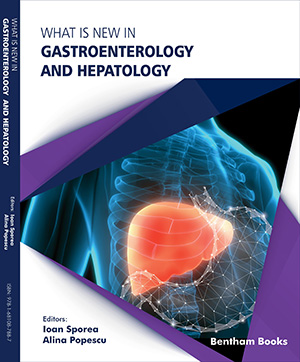Abstract
Background: Drug-induced liver injury (DILI) and the causative drug in patients under polypharmacy medication represent a challenging diagnosis.
Case Report: A 73 years old multimorbid man receiving polypharmacy, including rosuvastatin among other drugs, presented with high values of alanine aminotransferase (950 U/L) and aspartate aminotransferase (702 U/L), associated with a normal value of alkaline phosphatase (46 U/L), which turned out as DILI due to the hepatocellular injury type with an R-value of 29.8 as calculated from liver test values. Causality for each drug was assessed using the updated RUCAM (Roussel Uclaf Causality Assessment Method) prospectively. Causality for rosuvastatin and diltiazem was highly probable based on a RUCAM score of 9, but no reports of DILI caused by diltiazem were found. In addition, the causality grade for other drugs included in the patient’s medication was “probable” based on a RUCAM score of 6 to 8. The patient experienced a favorable outcome after discontinuation of all medication.
Discussion: The medication history, as well as the prospective and proactive causality evaluation by the updated RUCAM, helped establish the diagnosis of severe DILI by two highly suspected causative drugs, considering also several drugs with a “probable” causality grade in this case. Statins may cause direct damage to the liver, interact with other drugs, and enhance the susceptibility to DILI caused by commonly safe drugs
Conclusion: In this case, the DILI was caused by rosuvastatin as evidenced by a high score in the updated RUCAM, but a large number of comedications may have a co-triggering effect.
Keywords: Drug induced liver injury (DILI), case report, liver injury, roussel uclaf causality assessment method (RUCAM), statins.
Graphical Abstract
[PMID: 28379587]
[http://dx.doi.org/10.1056/NEJMra1816149] [PMID: 31314970]
[http://dx.doi.org/10.3390/ijms17010014] [PMID: 26712744]
[http://dx.doi.org/10.1016/0895-4356(93)90101-6] [PMID: 8229110]
[http://dx.doi.org/10.1016/0895-4356(93)90102-7] [PMID: 8229111]
[http://dx.doi.org/10.1016/0168-8278(90)90124-A] [PMID: 2254635]
[http://dx.doi.org/10.1053/j.gastro.2015.03.006] [PMID: 25754159]
[http://dx.doi.org/10.1002/hep.28323] [PMID: 26517184]
[http://dx.doi.org/10.3390/ijms17020224] [PMID: 26861310]
[http://dx.doi.org/10.1080/17425255.2018.1539077] [PMID: 30354694]
[http://dx.doi.org/10.19080/ARGH.2020.15.555904]
[http://dx.doi.org/10.1016/0002-8703(94)90402-2] [PMID: 8197999]
[http://dx.doi.org/10.3390/medicines7100062] [PMID: 33003400]
[http://dx.doi.org/10.14740/gr1212] [PMID: 31636777]
[http://dx.doi.org/10.1016/j.amjcard.2004.06.049] [PMID: 15464670]
[http://dx.doi.org/10.4103/0366-6999.158382] [PMID: 26063377]
[http://dx.doi.org/10.12659/MSM.904090] [PMID: 29200411]
[http://dx.doi.org/10.3748/wjg.v13.i8.1286] [PMID: 17451217]
[http://dx.doi.org/10.3389/fphar.2019.00730] [PMID: 31396080]
[http://dx.doi.org/10.1007/978-3-030-50983-5_12]
[http://dx.doi.org/10.3389/fphar.2019.00837] [PMID: 31402866]
[http://dx.doi.org/10.21037/atm-2020-ubih-05] [PMID: 33987428]
[http://dx.doi.org/10.1002/hep.22272] [PMID: 18454504]
[http://dx.doi.org/10.1002/hep.23317] [PMID: 19839004]
[http://dx.doi.org/10.1007/978-1-4939-7677-5_3]
[http://dx.doi.org/10.1002/hep.26208] [PMID: 23258593]
[http://dx.doi.org/10.1016/j.jhep.2015.04.016] [PMID: 25912521]
[http://dx.doi.org/10.18632/oncotarget.4400] [PMID: 26220713]
[http://dx.doi.org/10.1016/j.jhep.2011.07.023] [PMID: 21889469]
[http://dx.doi.org/10.1038/ajg.2010.102] [PMID: 20445507]
[http://dx.doi.org/10.1016/j.jhep.2011.08.016] [PMID: 21963520]
[http://dx.doi.org/10.1016/j.jhep.2012.03.010] [PMID: 22510260]
[http://dx.doi.org/10.1016/j.jhep.2012.04.001]
[http://dx.doi.org/10.1016/S1665-2681(19)30943-3] [PMID: 22481466]
[http://dx.doi.org/10.3389/fphar.2020.00842] [PMID: 32581801]
[http://dx.doi.org/10.1007/s40264-016-0427-8] [PMID: 27142208]
[http://dx.doi.org/10.1080/17425255.2017.1362391] [PMID: 28772086]
[http://dx.doi.org/10.3390/ijms18040803] [PMID: 28398242]
[http://dx.doi.org/10.3390/ijms21010212] [PMID: 31892250]
[http://dx.doi.org/10.1053/j.gastro.2015.04.027] [PMID: 25921378]
[http://dx.doi.org/10.3390/ijms17091488] [PMID: 27608014]
[http://dx.doi.org/10.1111/bcp.13593] [PMID: 29607530]










